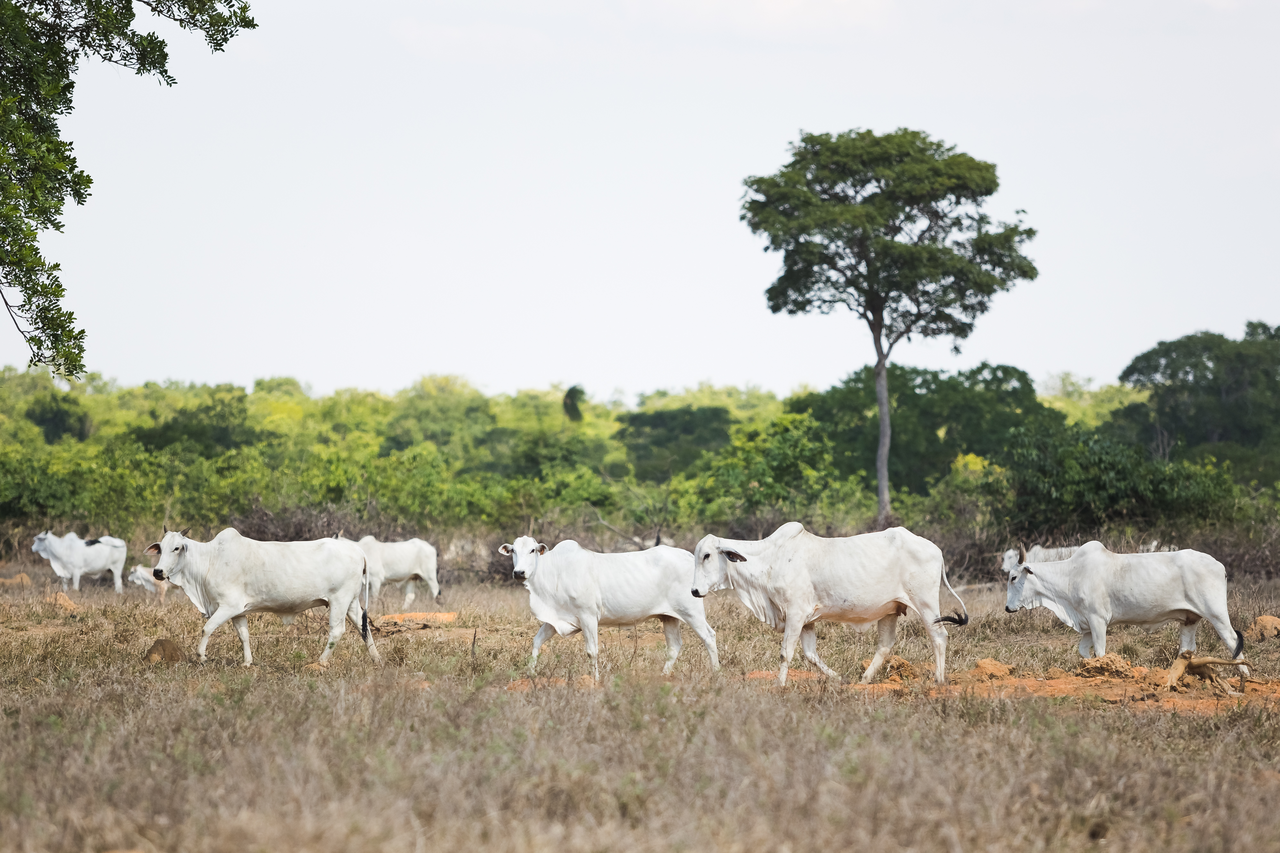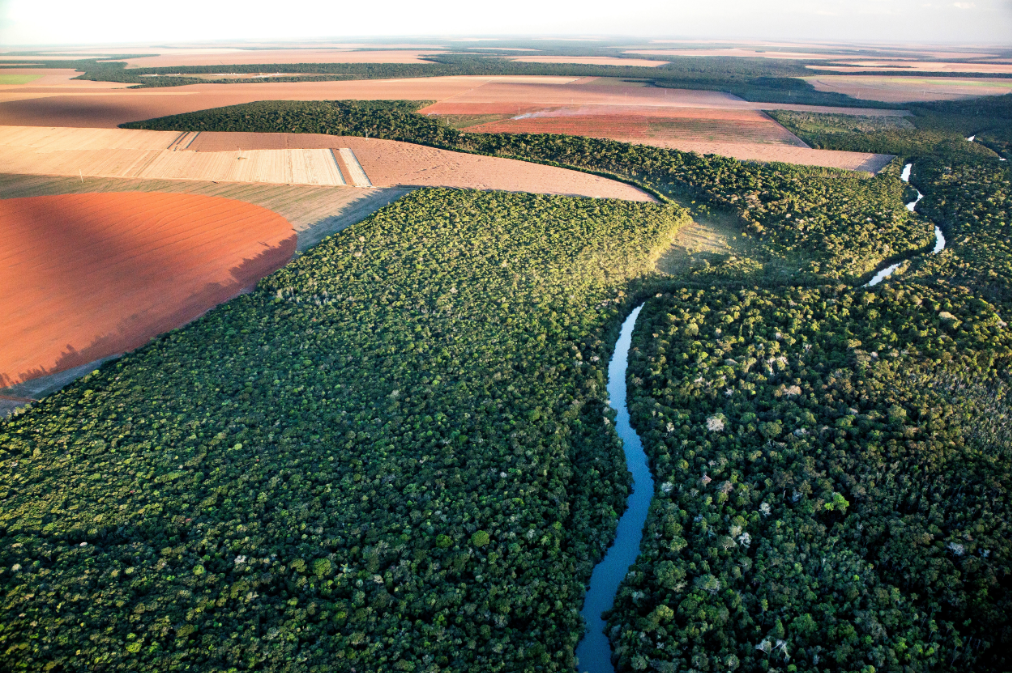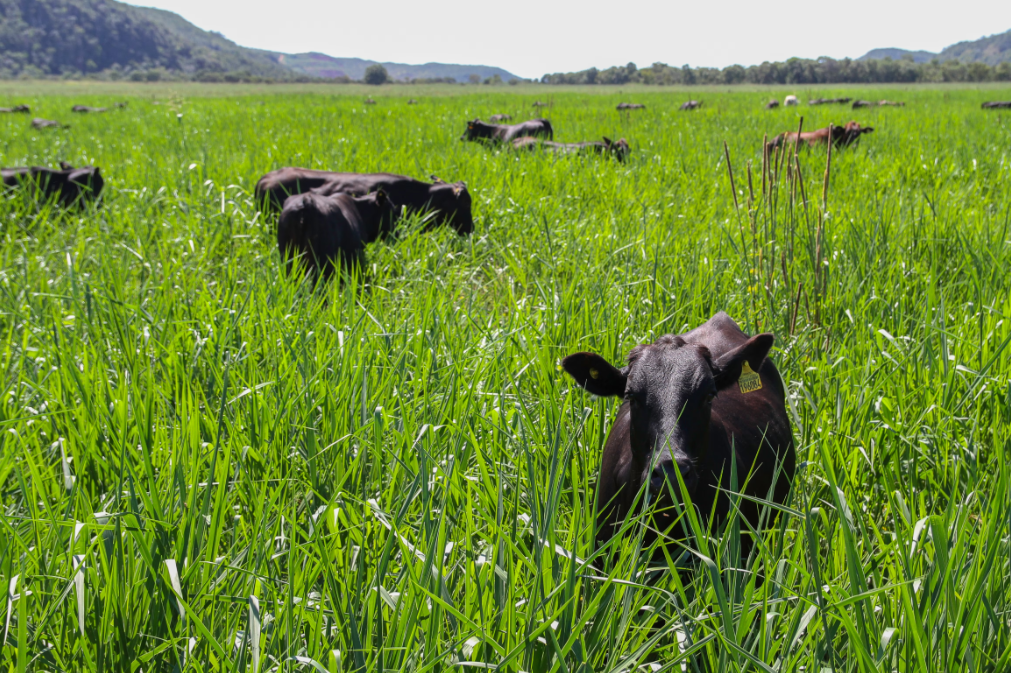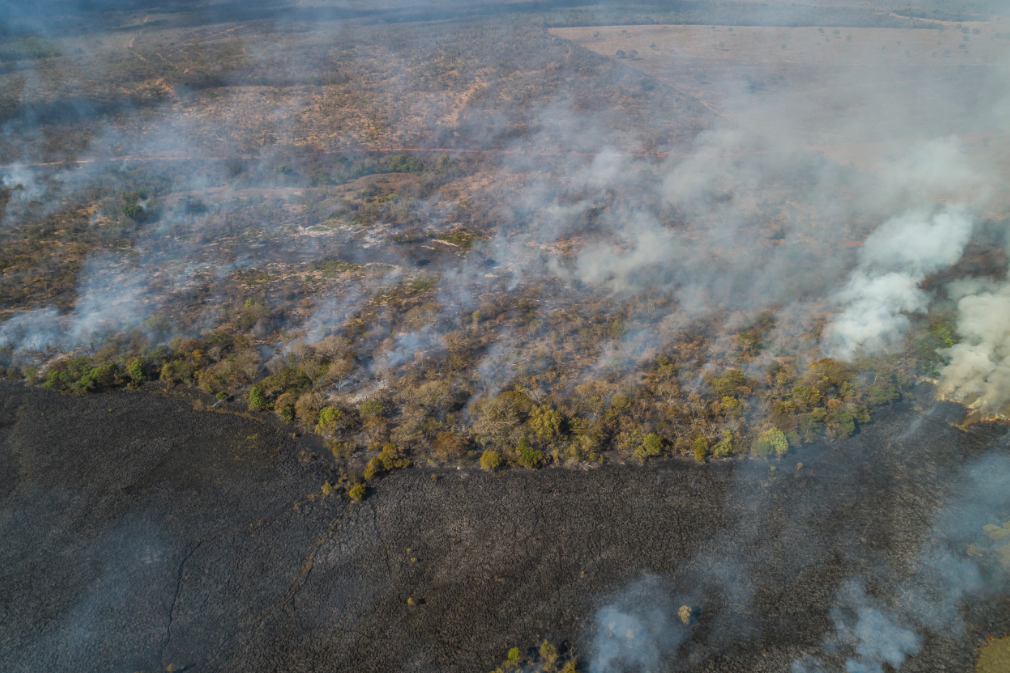Conservation program in Brazil could lead to more profitable farms and ranches

The Cerrado, in central Brazil, is one of the world’s most expansive savannas—two million square kilometers of tropical grasslands, trees and watersheds. But that abundance of plant biodiversity and wildlife is at risk, the result of deforestation and an agricultural footprint that for years has been expanding into the natural habitat.
So, what can be done—not only to protect the Cerrado, but to reclaim and revitalize millions of hectares of pasture and farmland that have been degraded, yet have potential for reuse?
Conservationists, policymakers and the agriculture community are working together to strike a balance that could provide environmental benefits while being economically feasible. They have embarked on an ambitious project called REVERTE®, a Portuguese word that in this context refers to restoring the land.
Organizers must take into account that ranching and farming in the Cerrado have helped make Brazil a global leader in beef and soybean production. That’s why any steps toward remediation must not disrupt what has become a vital source in the world food supply. It’s a matter of making the current ranch and farmland more sustainably productive, rather than continuing to expand production by clearing native vegetation.
“We believe that, in the coming years, Brazil will have an even more strategic role in feeding the world,” says Guillermo Carvajal, the head of sustainable and responsible business for Syngenta Group in Latin America. “But that will depend on how agricultural expansion occurs.”
REVERTE® is a joint initiative by Syngenta Group and The Nature Conservancy—long-time partners in sustainability and conservation. The program, conceived in early 2020, is now shifting from planning to early-stage implementation. While it’s still early days for the program, REVERTE® has far-reaching ambitions.
Optimizing use of suitable land
Given the sheer scope of the Cerrado, regeneration will be a long-term undertaking. The Cerrado comprises 204 million hectares (about 593 million acres), or 22 percent of Brazil’s land. Pastures account for 60 million hectares and crops for another 24 million. There are an estimated 11 million hectares of degraded pastureland in the Cerrado, of which 9 million are deemed suitable for agriculture—if steps are taken to reclaim them.
A first step is making a credit line available to participating farms. This financing, organized by Syngenta Group and provided by Itaú BBA, a major bank in Latin America, will be available for an estimated 30,000 hectares within three states in the Cerrado. The goal is to have the requisite infrastructure in place—farm staff, equipment, seeds and other supplies—and soil prepared in time for soybean planting in October. Discussions are now underway with potentially eligible farms.
Syngenta Group’s goal is for 1 million hectares of degraded soil to be recovered and turned into productive areas throughout Brazil by 2030. A significant portion of that will be in the Cerrado, where we are working with TNC. Optimizing production on existing farm property and restoring degraded pasturelands by planting soy and other row crops are just a few of the ways we are working together to make this happen.
“That’s pretty much a win-win,” says David Cleary, global agriculture director with The Nature Conservancy. “You get increased production and reduced conversion and biodiversity loss.” It’s also climate friendly, because it reduces the burning of vegetation traditionally used for land clearing in the Cerrado, and it increases carbon sequestration through soil restoration and other practices.
To qualify for financing under the program, farms must commit to conserve native vegetation and restore the environment in accordance with Brazilian policy. They will be encouraged to adopt sustainable practices, including no tillage, crop rotation, cover crops and integrated pest management. The program will also promote the integration of beef, crops and even forestry into Cerrado land management.
Because no-till agriculture avoids re-releasing the carbon dioxide that plants capture from the air and store in their roots, projects like REVERTE® can actually help mitigate climate change.
Turnkey approach
Crucial to REVERTE®’s success will be getting buy-in from Brazil’s farmers, many of whom are accustomed to existing methods, despite the environmental toll on the Cerrado. And despite the eventual prospect for more profitable farms and ranches, the transitional costs can be a deterrent, unless attractive financing is available.
That’s why REVERTE® has been designed with a comprehensive and easy-to-adopt business plan, to make sustainable farming the preferred way of working, with clear lines of action and outcomes.
Syngenta Group and The Nature Conservancy have created a “toolkit,” or turnkey approach, to lower the barriers to getting started. The toolkit will be useful not only to the farms receiving the credit line, but also in providing training to farmers and sharing agricultural best practices. The toolkit is being developed in collaboration with Embrapa, Brazil’s agricultural research organization, and other partners.
The REVERTE® plan has these building blocks:
- Agronomics - Determine inputs, equipment and processes required to restore degraded pastureland, in coordination Embrapa
- Seeds - Identify soybean and corn seeds that support soil restoration and biofuels development on the soils of the Cerrado, which are relatively drier and less fertile than farmland elsewhere in Brazil
- Financing - Provide financing with terms of up to 10 years to encourage long-term investment in infrastructure and equipment, in alignment with an environmental framework developed by The Nature Conservancy
- Policy - Collaborate with partners on a policy agenda that addresses the agriculture supply chain
- Digital tools – Make technologies such as Syngenta’s Cropwise crop-monitoring platform and FarmShots satellite imagery service available to drive efficiencies and higher production
Those are the components of what Cleary refers to as a “system level” solution that will be required to scale REVERTE®—not only to meet its 2025 goals, but to support a broader plan by the Brazilian government to restore 20 million hectares of degraded farmland over 10 years.
A business model for success
The expansion of soy cultivation over open areas is already happening in some parts of the Cerrado, but investment is needed to spur the practice more widely. “The producers need specific financing conditions,” says Syngenta Group’s Carvajal. “Syngenta Group met with growers and created a business case based on their requirements.”
The loan terms range from 8 to 10 years. That’s a few years longer than earlier farm-loan programs that were mostly unsuccessful. There will also be a three-year grace period before loan repayment begins, giving participants time to get new processes up and running, including the introduction of new crops and integrated farming. Consultants will work one-on-one with farmers to assist with financing and advise on best practices and checkpoints along the way.
The financing program also aims to lower risk for producers by offering, as an option, a market for their soybeans, corn, beef and other agricultural products via Syngenta Group’s trading platform, Nutrade.
The financial assistance will help facilitate technology adoption by growers and ranchers. Many of them may have the resources needed for current operations, but not necessarily to restore degraded lands, which can involve a significant investment that does not pay returns in the short term of a single growing season.
Sharing lessons learned
Although REVERTE® is only in its first year of implementation, months of planning have paved the way for the rollout now underway. Julia Mangueira, The Nature Conservancy’s program lead in Brazil, says lessons learned will be shared as farms and partners are brought into the initiative.
“This program has a goal of influencing other partners to join us or develop similar strategies to restore the degraded pastures in the Cerrado and conserve native vegetation, while delivering the food production we need, now and in the future,” Mangueira says. “It is an effort where many stakeholders are needed.”
While much of the current focus is on more productive and sustainable farming, one significant outcome is expected to be land conservation. The Nature Conservancy, in a 2019 report on sustainable soy in the Cerrado, found that it may be possible to minimize or even stop further conversion of natural habitat by focusing on the use of already cleared lands.
“That's the optimum—if conservation becomes embedded in a market play,” says The Nature Conservancy's Cleary. “That’s the absolute best-case scenario for us.”
Soybean farming in the Cerrado, a savanna that extends across 204 million hectares, has helped make Brazil a world leader in soy production. Credit: Ludus Video for The Nature Conservancy
Soybean farming in the Cerrado, a savanna that extends across 204 million hectares, has helped make Brazil a world leader in soy production. Credit: Ludus Video for The Nature Conservancy
The REVERTE® project will encourage integrated systems of cattle and crops. Credit: Erik Lopes for The Nature Conservancy
The REVERTE® project will encourage integrated systems of cattle and crops. Credit: Erik Lopes for The Nature Conservancy
The REVERTE® initiative aims to reduce deforestation and burning of native habitat by reclaiming 1 million hectares of degraded pastureland. Credit: André Dib for The Nature Conservancy
The REVERTE® initiative aims to reduce deforestation and burning of native habitat by reclaiming 1 million hectares of degraded pastureland. Credit: André Dib for The Nature Conservancy





